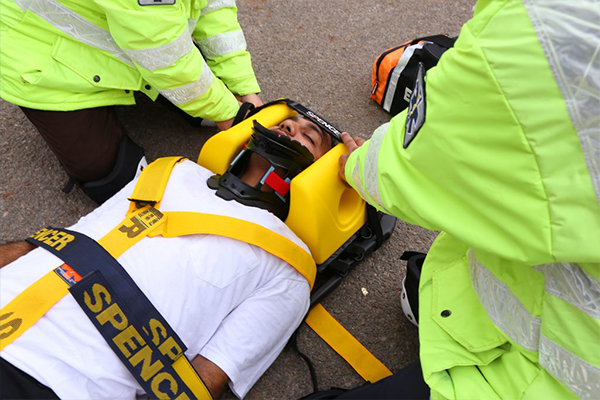
Spinal Trauma
Damage to the spinal cord or the nerves at the end of the spinal canal, can result in a spinal cord injury or trauma, frequently resulting in permanent alterations to strength, sensation, and other bodily functions below the site of the lesion. It could seem as though every part of your life has been impacted if your spinal cord was suddenly harmed. Your injuries may have psychological, emotional, and social repercussions.
Following a spinal cord injury, your ability to control your limbs is influenced by the location of the injury on your spinal cord and its severity.
The following signs and symptoms could result from a spinal cord injury:
- Decrease in movement
- Loss of or change in sensation, including the sense of touch, heat, and cold
- A lack of bladder or bowel control
- Hyperactive reflex actions or spasms
- Changes in fertility, sexual sensitivity, and sexual function
- Breathing, coughing, or cleaning lungs' secretions with difficulty
Damage to the spinal column's vertebrae, ligaments, discs, or the spinal cord itself can cause spinal cord injuries.
A quick, severe impact to your spine that dislocates,fractures, or compresses one or more of your vertebrae can result in a traumatic spinal cord injury. It may also result from a gunshot or knife damage to the spinal cord.
Arthritis, cancer, inflammation, infections, or disc degeneration of the spine can all result in a non-traumatic spinal cord injury.
Spinal traumas are diagnosed by tests like X-rays, CT scans, and MRIs. Unfortunately, spinal cord injuries cannot be healed. However, scientists are constantly developing new therapies, such as artificial limbs and drugs, that may aid in the regeneration of damaged nerve cells or enhance the performance of the remaining nerves.
In the meanwhile, spinal cord injury therapy focuses on preventing potential suffering and enabling those who have suffered a spinal cord injury to lead active, productive lives once again.
 WhatsApp
WhatsApp